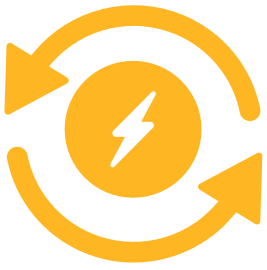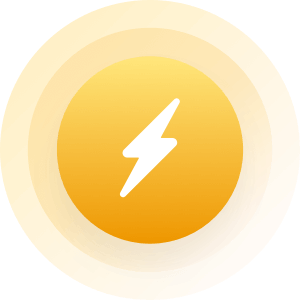| Topic: San Andreas Fault | |
|---|---|
|
San Andreas fault 'locked, loaded and ready to roll'
http://www.latimes.com/local/lanow/la-me-ln-san-andreas-fault-earthquake-20160504-story.html/ latimes.com May 4, 2016 San Andreas fault 'locked, loaded and ready to roll' with big earthquake, expert say Southern California’s section of the San Andreas fault is “locked, loaded and ready to roll,” a leading earthquake scientist said Wednesday at the National Earthquake Conference in Long Beach. The San Andreas fault is one of California’s most dangerous, and is the state’s longest fault. Yet for Southern California, the last big earthquake to strike the southern San Andreas was in 1857, when a magnitude 7.9 earthquake ruptured an astonishing 185 miles between Monterey County and the San Gabriel Mountains near Los Angeles. It has been quiet since then — too quiet, said Thomas Jordan, director of the Southern California Earthquake Center. See the most-read stories this hour >> “The springs on the San Andreas system have been wound very, very tight. And the southern San Andreas fault, in particular, looks like it’s locked, loaded and ready to go,” Jordan said in the opening keynote talk. Other sections of the San Andreas fault also are far overdue for a big quake. Further southeast of the Cajon Pass, such as in San Bernardino County, the fault has not moved substantially since an earthquake in 1812, and further southeast toward the Salton Sea, it has been relatively quiet since about 1680 to 1690. Here’s the problem: Scientists have observed that based on the movement of tectonic plates, with the Pacific plate moving northwest of the North American plate, earthquakes should be relieving about 16 feet of accumulated plate movement every 100 years. Yet the San Andreas has not relieved stress that has been building up for more than a century. Jordan said it’s important that California focus on becoming resilient to a potential huge earthquake, one as strong as a magnitude 8. He praised Los Angeles’ plan to require earthquake retrofits on apartment and concrete buildings, pushed into law by Mayor Eric Garcetti. “It’s remarkable that this happened,” Jordan said. “We know politically how difficult it is to make these kinds of changes.” Other areas of focus have included strengthening Los Angeles’ vulnerable aqueduct systems and its telecommunications networks. A 2008 U.S. Geological Survey report warned that a magnitude 7.8 earthquake on the southern San Andreas fault would cause more than 1,800 deaths, 50,000 injuries, $200 billion in damage and severe, long-lasting disruptions. Among the predicted problems: The sewer system could be out of commission for six months. Join the conversation on Facebook >> Such an earthquake could cause shaking for nearly two minutes, with the strongest shaking in the Coachella Valley, Inland Empire and Antelope Valley, but it also could send pockets of strong shaking into areas where sediments trap shaking waves, such as the San Gabriel Valley and East Los Angeles. The devastating potential of the fault became clear with a 1857 temblor, which had an estimated magnitude of 7.9. It became known as the Fort Tejon quake. The name is something of a misnomer because it started farther north, way up in Parkfield in Monterey County. The quake then barreled south on the San Andreas for about 185 miles, through Fort Tejon near the northern edge of Los Angeles County, then east toward the Cajon Pass in San Bernardino County, near what is now the 15 Freeway. The quake was so powerful that the soil liquefied, causing trees as far away as Stockton to sink. Trees were also uprooted west of Fort Tejon. The shaking lasted 1 to 3 minutes. Even though the San Andreas fault does not go directly into Los Angeles — it is 30 miles away from downtown — the city is expected to be heavily shaken by a large earthquake on that fault. For instance, simulations of a possible magnitude 7.8 quake on the San Andreas fault that begins at the Salton Sea and spreads west toward the San Gabriel mountains show seismic shaking waves "bent into the Los Angeles area," Jordan said. One video shows strong ground-shaking stretching from northern San Diego County to Barstow. Using the world's largest supercomputer at the time, the Southern California Earthquake Center in 2010 unveiled a simulated magnitude 8 earthquake that begins in Monterey County, like in 1857, but travels even farther south, heading toward the Mexican border. The L.A. Basin and the San Fernando Valley would be hit hard because the shaking would be trapped by soft soils in the valley and basin. "You can see that this area of influence by the shaking has now expanded out to huge proportions," Jordan said. "You see that big directivity pulse out in front, as that energy is being shoved down that fault, that directivity pulse leads energy into seismic waves that excite the sedimentary basins, like the San Fernando Valley and the Los Angeles Basin," and through San Bernardino, Jordan said. "You'll notice large shaking in the Los Angeles region persisting for long periods of time," he said. |
|
|
|
|
|
Catastrophic California quake due at any time, warns seismologist
California could be hit by a massive earthquake at any time, a leading seismologist warned a national conference Wednesday, potentially killing thousands of people and costing hundreds of billions of dollars. The section of the San Andreas Fault in the Los Angeles area has been quiet for too long and Thomas Jordan believes it’s now a ticking time bomb that could produce an 8 magnitude ‘Big One’. The San Andreas fault is expected to go anytime, and it's more expected now. What a great summer to go to San Diego. — James Karchner (@J_Karchner) May 5, 2016 “The springs on the San Andreas system have been wound very, very tight... locked, loaded and ready to go,” Jordan said at the National Earthquake Conference in Long Beach, as reported by the LA Times. Such a quake would hit areas away from the ocean the hardest like the Coachella and Antelope valleys and Inland Empire, but tremors would hit Los Angeles and San Gabriel Valley as well, according to the Times. This section of the major faultline hasn’t produced a ‘big one’ since 1857 when a 7.9 quake shook nearly half the state. A San Andreas shift further north in the Bay Area was the cause of the 1989 Loma Prieta quake which killed 63 people and caused up to $6 billion in damage in cities such as San Francisco and Oakland. Deadly Devastation A 7.8 quake in the Southern California area could result in “approximately 1,800 deaths, of which about half occur because of the fires following the earthquake” and cost $213 billion, according to a 2008 US Geological Survey. Another 750 people would have severe injuries, the survey found, and “50,000 people will have injuries that need emergency room care.” The death rate could further increase due to damaged hospitals not being able to function. @riley_paige Between super volcanoes, the San Andreas fault, and no droughts is the beach front view even worth living in California? — YeeYee! (@UnderZachAttack) April 25, 2016 Other risks identified in the study included “between 10,000 and 100,000 individual landslides, the vast majority of which will consist of rock falls, rock slides, rock avalanches, soil falls, disrupted soil slides and soil avalanches.” Close to 1,000 roads crossed the fault line at the time of the study, along with 90 fiber optic cables, 21 railroads, 39 gas and petroleum pipelines, and 32 aqueducts. Total losses to buildings is estimated at $33 billion, and it would cost $1 billion to repair water and sewer lines. The damaged water supply would also affect firefighting capabilities. According to the study, “the worst hit areas may not have water in the taps for six months.” Releasing Tension It’s not just the Southern California section that’s at risk. Areas further southeast down the line haven’t experienced big quakes since 1812 and the 17th century. The Pacific plate is moving northwest at a rate of 16ft (5 meters) each century, which is causing decades of tension to build up that at some point will need to be released. Prepper Paradise Jordan said it is important to prepare for such a quake, something preppers and doomsday survivalists know a thing or two about. The more I hear about the state of the world, the more I'm starting to think the people on #DoomsdayPreppers have the right idea... — Kirsty Edwards (@searose84) January 6, 2016 California has already taken steps to prepare for earthquakes, such as the apartment retrofits and aqueduct strengthening regulations that were passed by voters in 2015. Owners have seven years to fix vulnerable wood buildings and 25 years for concrete buildings. The Great California Shake Out drill prepares Golden State residents for the next Big One. The Metropolitan Emergency Managers Committee created this video in 2012 to remind people that “Disaster” makes unexpected visits and “Preparedness” key. Luckily, there are plenty of preppers on the internet who are full of tips on how to prepare for all sorts of disasters, like this handy guide for creating an "Earthquake Preparedness Bedside Kit." Here are a few items that preppers should not buy for a disaster. Sorry, no Pop Tarts or junk food allowed! The Federal Emergency Management Agency (FEMA) made this humorous video in 2013 to show how being unprepared for a disaster can be, well, a disaster. Past Earthquakes The biggest recorded earthquake to hit California was the 1857 Fort Tejon event which ran for 186 miles along the San Andreas Fault and hit 7.9 magnitude. It left a surface scar along the fault, but despite its strength, only two people are said to have died due to the sparsely populated area at the time. The San Francisco earthquake of 1906 caused the most damage, when 3,000 people died. The 1994 Northridge earthquake reached 6.7 magnitude and killed 57 people. Tremors were felt as far away as Las Vegas. Back in 1989 the Loma Prieta Quake killed 63 people, but was best remembered for being broadcast live during coverage of baseball’s World Series. And if you're not freaked out yet, did we mention the nuclear power plants along the San Andreas fault? Read more Tokyo Electric Power Co. (TEPCO)'s tsunami-crippled Fukushima Daiichi nuclear power plant's (L to R) No.4, No.3 No.2 and No.1 reactor buildings are seen in Fukushima prefecture. © Yomiuri Shimbun https://www.rt.com/usa/341971-san-andreas-fault-earthquake-due/ |
|
|
|
|
|
San Andreas fault 'locked, loaded and ready to roll'
I thought that President Obama signed an executive order renaming it Bush's Fault. |
|
|
|
|
|
I hope Lex Luther didn't buy up all the real estate there... I was interested in some new beachfront property.
|
|
|
|
|
|
San Andreas fault 'locked, loaded and ready to roll'
I thought that President Obama signed an executive order renaming it Bush's Fault.     
I gotta admit David, that was freakin' great! 
|
|
|
|
|
|
I hope Lex Luther didn't buy up all the real estate there... I was interested in some new beachfront property. in Arizona? |
|
|
|
|
|
I hope Lex Luther didn't buy up all the real estate there... I was interested in some new beachfront property. in Arizona? after CALI breaks off? 
|
|
|
|
|
|
I hope Lex Luther didn't buy up all the real estate there... I was interested in some new beachfront property. in Arizona? after CALI breaks off? 
the "experts" say Cali will just be a bunch of islands after the big one... but i never heard about OR or WA, if they will still be around... except for the 1000 ft tidal wave that will kill everyone... |
|
|
|
|
|
I hope Lex Luther didn't buy up all the real estate there... I was interested in some new beachfront property. in Arizona? after CALI breaks off? 
the "experts" say Cali will just be a bunch of islands after the big one... but i never heard about OR or WA, if they will still be around... except for the 1000 ft tidal wave that will kill everyone... Interesting future! 
|
|
|
|
|
|
I hope Lex Luther didn't buy up all the real estate there... I was interested in some new beachfront property. in Arizona? after CALI breaks off? 
Where is Superman when you need him? |
|
|
|
|
|
I hope Lex Luther didn't buy up all the real estate there... I was interested in some new beachfront property. in Arizona? Yes now the Navaho tribe will be the biggest beachfront owners! Bout time! |
|
|
|
|
|
David!, you should do stand up comedy!
|
|
|
|
|












